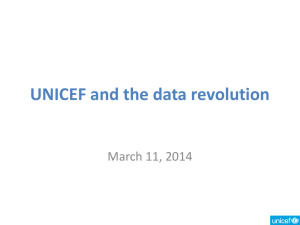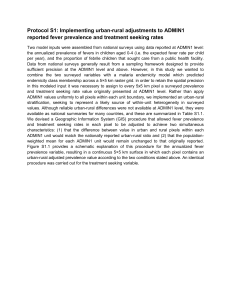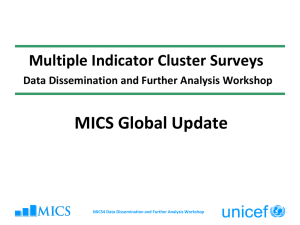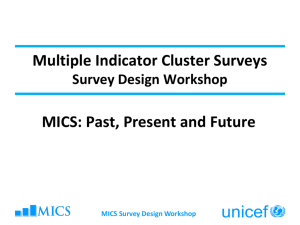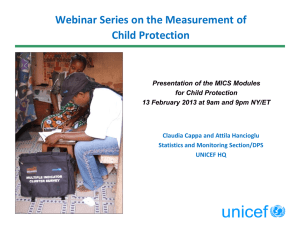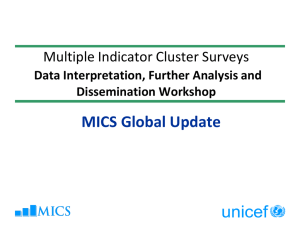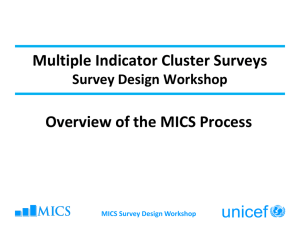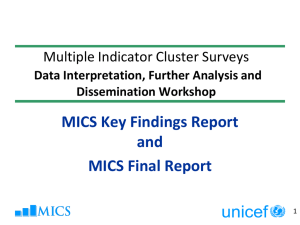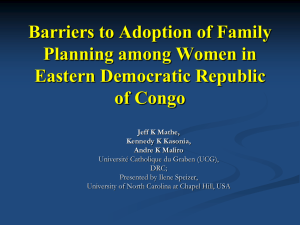DHS and MICS
advertisement
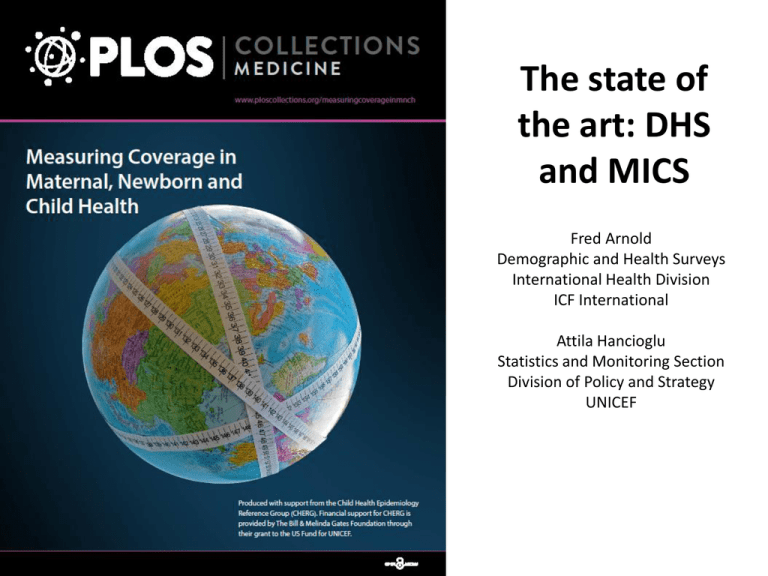
The state of the art: DHS and MICS Fred Arnold Demographic and Health Surveys International Health Division ICF International Attila Hancioglu Statistics and Monitoring Section Division of Policy and Strategy UNICEF Demographic and Health Surveys More than 300 surveys in over 90 countries Demographic and Health Surveys DHS project operating since 1984 Core funding from USAID Coordinated by ICF International DHS project includes DHS surveys, AIDS Indicator Surveys, Malaria Indicator Surveys, and Service Provision Assessment (SPA) surveys Multiple Indicator Cluster Surveys Since 1995, more than 100 countries and around 240 surveys MICS4 MICS1-3 Multiple Indicator Cluster Surveys Developed by UNICEF in the early 1990s to respond to data needs for the World Summit for Children Goals Funding from UNICEF, other UN agencies and development partners, and governments Technical support provided by UNICEF HQ, Regional Offices and household survey experts Role of DHS and MICS Surveys DHS and MICS surveys have played a major role in shaping the global agenda on tracking MNCH coverage and populating global databases – In UNICEF global databases, DHS and MICS account for 98% of information on use of ORS and continued feeding and 82% of information on skilled attendance at birth Use of DHS and MICS data Free public access to datasets in standard format and user support Data widely used in scientific literature – about 1,500 articles in peer-reviewed journals in last 10 years that use DHS and MICS data Through DHS STATcompiler and MICS Compiler, users can create custom tables of estimates of key indicators by background characteristics Harmonization of DHS and MICS Surveys DHS and MICS collaborate closely and work through interagency processes to ensure that survey tools and methodologies are harmonized and comparable This allows the calculation of key indicators in a standard fashion so that they can be compared across countries and over time Major Differences Differences in content: – DHS: Biomarkers, STDs, domestic violence, women’s empowerment, detailed questions on reproductive health and family planning – MICS: child labour, child discipline, early childhood development, knowledge of danger signs for illness The mode of technical assistance differs between the two survey programmes Major Differences DHS collects MNCH data only on biological children of interviewed women, while MICS covers all children living in households, including orphans and foster children. However, this does not seem to have a substantial influence on national estimates DHS surveys generate information on births during the past 5 years, while MICS uses a 2-year reference period. This has implications for sample sizes and reference periods of coverage indicators Strengths Data quality is the foremost consideration when designing DHS and MICS surveys The major strength of DHS and MICS is the incorporation of quality control mechanisms at every step in the survey process – including sampling, training, supervision, data processing, and dissemination of results Challenges and Limitations Challenges in the adaptation of standard protocols to country context Heaping and displacement of ages and dates Questionnaire sizes are approaching lengths that may adversely affect data quality Estimates at lower administrative levels (districts, slums, small population groups) are usually not available, but over-sampling is sometimes used to generate such data Key Points DHS and MICS are the principal source of data on MNCH indicators in low and middle income countries Household surveys are likely to remain the primary source of data for the foreseeable future, despite efforts to improve routine information systems To analyze estimates over time and across countries from household survey data, it is essential that similar methods and questions be employed to ensure comparability Key Points Strengths and weaknesses of all data collection efforts need to be transparent and well understood by data users DHS and MICS will continue to benefit from methodological research to make further improvements in the collection of MNCH data http://www.ploscollections.org/measuringcoverageinmnch

